- Author: Kathy Keatley Garvey
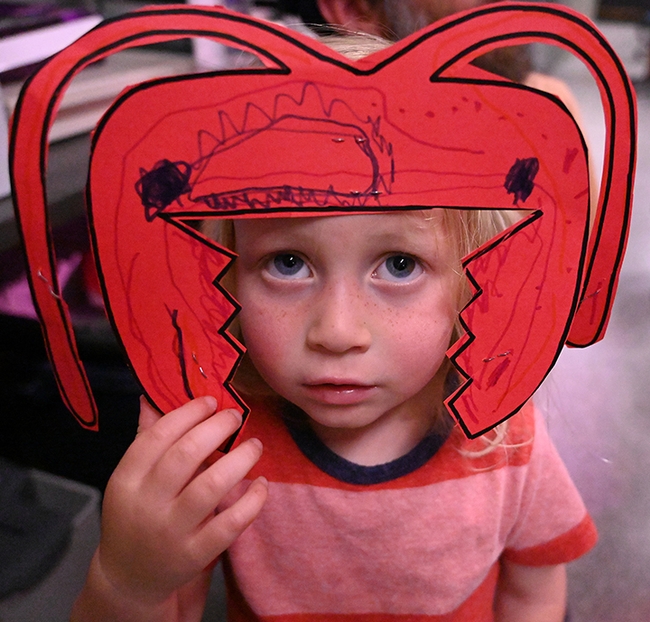
They really weren't red ants, but children wearing ant headgear, created during the family arts-and-crafts activity at the Bohart Museum of Entomology's open house on ants. The Phil Ward lab, UC Davis Department of Entomology and Nematology, organized and presented the open house.
The ant headgear was the brainchild of Tabatha Yang, education and outreach coordinator, and student intern Jakob Jess of MET Sacramento High School. He completed his two-year internship at the Bohart Museum this week, and starting this fall, will begin his studies at UC Berkeley.
"This was an art project inspired by leafcutter ants," Yang said, "and was meant to be both whimsical and colorful, thus the bright red. We had a template for folks to use, but they could also create their own from looking at the ant illustrations."
Myrmecologist Eli Sarnat, who received his doctorate at UC Davis, studying with Professor Ward, brought his sons, Benjamin, 7 and Evan, 3 to the event. They delighted in creating the ant headgear and checking out the ant displays.
UC Davis senior entomology major Morgan Myhre helped her children, Galileo, 5, and Esmeralda, 2, with their creations.
First-year entomology major Kat Taylor staffed the arts-and-crafts table, assisting the youngsters with their ideas. She also stapled the finished projects.
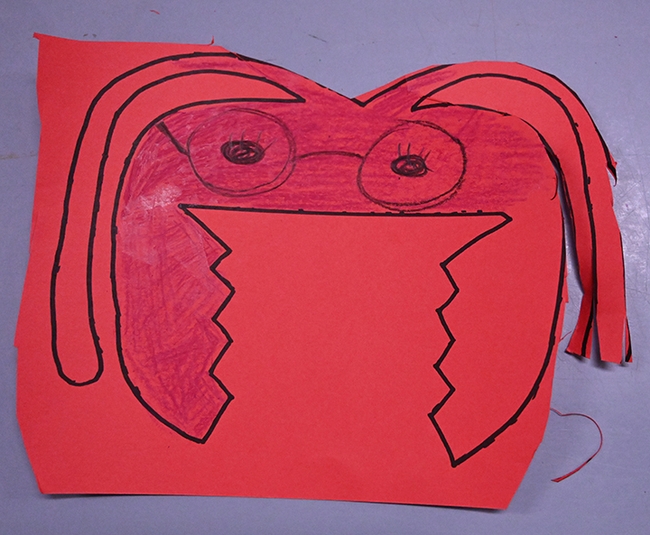
"The questions were mostly about the habits and behavior of ants, how many species are there, etc.," Ward related. "And how can I obtain live colonies for my kid? I received almost no queries about 'how do I get rid of them in my kitchen?' and that was refreshing."
"We had live colonies of a centipede-hunting ant (Stigmatomma oregonense) and a generalist omnivore (Aphaenogaster occidentalis)," Ward said. "The displays also included collections of common California ants; the world's smallest ant (Carebara) and the world's largest ant (Myrmecia)."
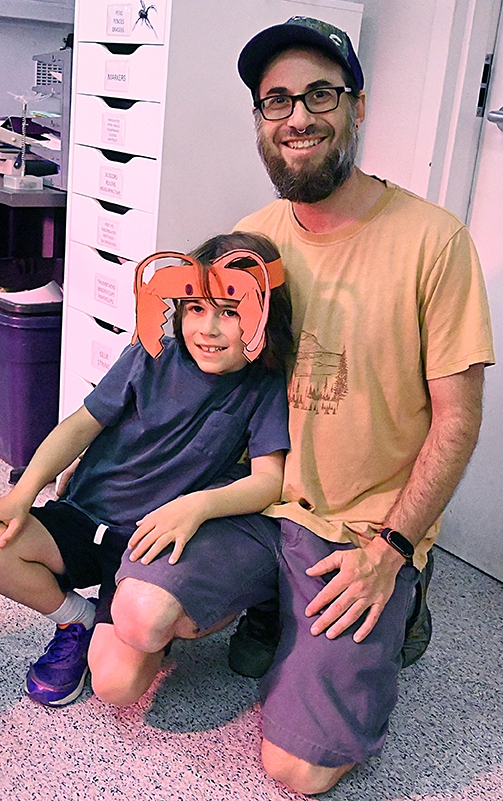
Oberski, who received her bachelor's degree in biology and a bachelor's degree in German studies (summa cum laude) in 2016 from Macalester College, Saint Paul, Minn., finished her dissertation earlier this month. She will present her exit seminar on "Phylogenetics and Biography of Pyramid Ants" at 4:10 p.m., Wednesday, June 7 in 122 Briggs Hall. It also will be on Zoom.
Oberski fielded such questions as "What do ants eat?" and "Are ants specialized or generalized in their feeding habits?" The answer can vary a lot, Oberski told them. "Some ants are generalists that eat any food they come across, but others are extremely specific, like ants that are fungus farmers or specialized predators of springtails, spider eggs, or centipedes."
Professor Ward and ants are showcased in a Bohart Museum of Entomology video on YouTube, https://youtu.be/d8eRNsD8dxo. Ants, he related, originated about 120 million years ago (early Cretaceous), evolving from "wasp-like creatures."
Next Open House on June 3. The next open house at the Bohart Museum is themed "Insects and Forensics," and will feature forensic entomologist Robert "Bob" Kimsey of the UC Davis Department of Entomology and Nematology. Free and family friendly, the open house will take place from 1 to 4 p.m., Saturday, June 3 in Room 1124 of the Academic Surge Building, 455 Crocker Lane. The arts-and-crafts activity will be "maggot-inspired art," Yang announced.
The Bohart Museum, directed by UC Davis distinguished professor Lynn Kimsey, houses a global collection of eight million insect specimens. It also maintains a live "petting zoo," complete with Madagascar hissing cockroaches, stick insects, and tarantulas, among others; and an insect-themed gift shop, stocked with books, posters, jewelry, pens, T-shirts, hoodies, and collecting equipment.





- Author: Kathy Keatley Garvey
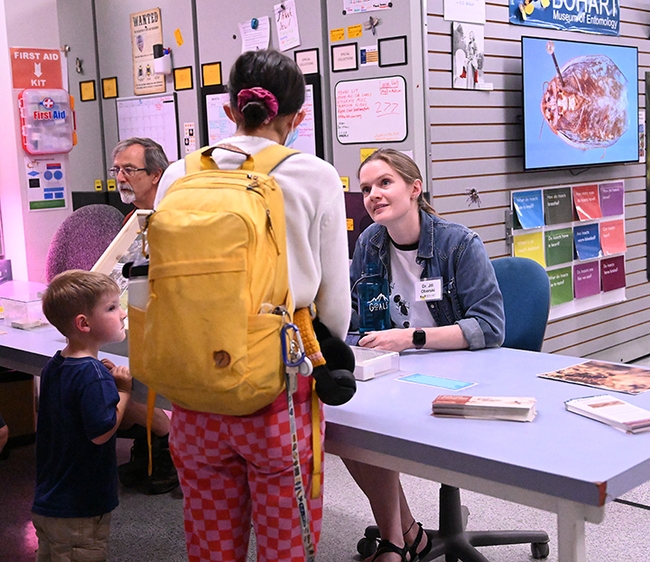
The three-hour open house included displays of live ants as well as specimens. Ward and newly minted PhDs, Jill Oberski and Zachary Griebenow of the Ward lab, fielded scores of questions. Oberski and Griebenow each wore a "Dr." name tag, presented by Tabatha Yang, Bohart Museum education and outreach coordinator.
"The questions were mostly about the habits and behavior of ants, how many species are there, etc.," Ward related. "And how can I obtain live colonies for my kid? I received almost no queries about 'how do I get rid of them in my kitchen?' and that was refreshing."
"We had live colonies of a centipede-hunting ant (Stigmatomma oregonense) and a generalist omnivore (Aphaenogaster occidentalis)," Ward said. "The displays also included collections of common California ants; the world's smallest ant (Carebara) and the world's largest ant (Myrmecia)."
Griebenow, who recently presented his exit seminar on "Systematic Revision of the Ant Subfamily Leptanillinae (Hymenoptera:Formicidae), Reciprocally Illuminated by Phylogenomics and Morphology," answered questions about his research, and general questions about ant diversity. Griebenow, who holds a bachelor of science degree (2017) in agriculture (entomology), magna cum laude, from The Ohio State University, joined the Ward lab in September 2017.
Oberski, who received her bachelor's degree in biology and a bachelor's degree in German studies (summa cum laude) in 2016 from Macalester College, Saint Paul, Minn., finished her dissertation earlier this month. She will present her exit seminar on "Phylogenetics and Biography of Pyramid Ants" at 4:10 p.m., Wednesday, June 7 in 122 Briggs Hall. It also will be on Zoom.
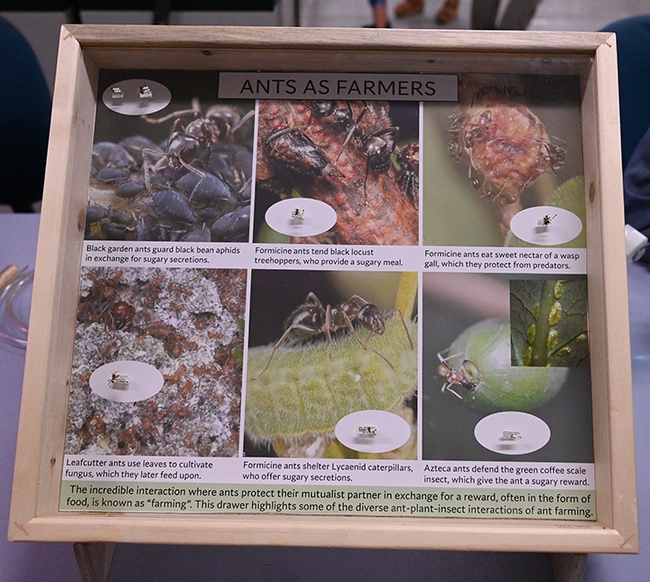
Questions at the open house? Oberski shared that she received "some great questions about ant diets. What do ants eat? Are ants specialized or generalized in their feeding habits? The answer can vary a lot. Some ants are generalists that eat any food they come across, but others are extremely specific, like ants that are fungus farmers or specialized predators of springtails, spider eggs, or centipedes."
Professor Ward is featured in a Bohart Museum of Entomology video on YouTube at https://youtu.be/d8eRNsD8dxo. Ants, he related, originated about 120 million years ago (early Cretaceous), evolving from "wasp-like creatures." They are members of the order Hymenoptera, and their closest relatives include honey bees, cockroach wasp and the mud daubers. California is home to some 300 species of ants, but thousands more live in the tropics. Globally, there may be as many as 40,000 to 50,000 species of ants, the professor estimated, but only about 14,000 are described.
Also in the video, Ward related that ants live in long-lived colonies with (1) cooperative brood care (2) overlapping generations and (3) reproductive division of labor, the hallmarks of eusocial behavior. He also pointed out:
- A typical ant colony contains a reproductive queen, numerous non-reproductive workers and brood (eggs, larvae, pupae)
- Colonies of ants can be thought of as superorganisms: tightly integrated and cooperative entities with complex systems of communication and division of labor (castes)
The Bohart Museum, directed by UC Davis distinguished professor Lynn Kimsey, houses a global collection of eight million insects and also maintains a live "petting zoo" (Madagascar hissing cockroaches, stick insects, tarantulas and others) and an insect-themed gift shop. The museum is located in Room 1124 of the Academic Surge Building, 455 Crocker Lane.
The next Bohart Museum open house, themed "Insects and Forensics," will be from 1 to 4 p.m., Saturday, June 3. It will feature forensic entomologist Robert "Bob" Kimsey and his work.







- Author: Kathy Keatley Garvey

Ask it at the "Doctor Is In" bug booth at Briggs Hall from 9 a.m. to 5 p.m., Saturday, April 15 during the 109th annual UC Davis Picnic Day.
The "docs" are two entomologists: doctoral candidate Zachary "Zach" Griebenow and doctoral student Ziv Lieberman. They study ants with major professor Phil Ward, UC Davis Department of Entomology and Nematology.
Want to identify an insect or learn more about it? Bring the insect and/or a photo and they'll answer your questions. Briggs Hall is located off Kleiber Hall Drive.
Griebenow, who joined the Ward lab in 2017, was a member of the UC Davis Linnaean Games team (now renamed the Entomology Games) that won two national championships (2018 and 2022) at the Entomological Society of America (ESA) meetings. He also was a member of Ohio State's Linnaean Games team that won second place in the 2017 national championship.
ESA describes The Games as a "fast-paced, college-bowl style contest in which students from various colleges and universities test their knowledge by answering questions on insect science. Students compete first at the regional branch level, and then the winning teams compete each year at the national level at ESA's Annual Meeting."
By the way, Griebenow will present his exit seminar at 4:10 p.m., Wednesday, April 19 in 122 Briggs Hall on "Systematic Revision of the Ant Subfamily Leptanillinae (Hymenoptera:Formicidae), Reciprocally Illuminated by Phylogenomics and Morphology." (See more on the Department of Entomology and Nematology website.) His presentation also will be virtual.
Lieberman joined the Ward lab in the fall of 2020. Published research includes Revision of the Highly Specialized Ant Genus Discothyrea (Hymenoptera: Formicidae) in the Afrotropics with X-Ray Microtomography and 3D Cybertaxonomy (journal of Insect Systematics and Diversity).
Forensic entomologist Bob Kimsey, and doctoral student Grace Horne of the lab of urban landscape entomologist Emily Meineke are coordinating the department's Picnic Day activities. Briggs Hall activities will take place from 9 a.m. to 5 p.m. The open house at the Bohart Museum of Entomology, located in Room 1124 of the Academic Surge Building, 455 Crocker Lane, is from 10 a.m. to 2 p.m. See schedule of insect activities, including Roach Races and Maggot Art, on Bug Squad blog.


- Author: Kathy Keatley Garvey
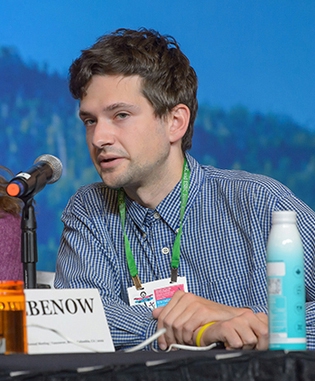
His presentation also will be virtual. The Zoom link:
https://ucdavis.zoom.us/j/95882849672.
Zach, a member of Professor Phil Ward's laboratory, says in his abstract: "Ants belonging to the subfamily Leptanillinae (Hymenoptera: Formicidae) are sister to nearly all other extant Formicidae. Miniscule and subterranean, little is known of them. Contrary to the collecting bias observed in most Formicidae, male leptanilline specimens are acquired more easily than workers or queens. The sexes are almost never collected together, and certain groups are known from males only—some of these being so bizarre as to not resemble ants at all. These restrictions obstruct our understanding of evolutionary relationships among the Leptanillinae."
"My thesis is aimed at leptanilline taxonomy that reflected phylogeny and integrated morphological data from both sexes. I here present the culmination of this work, reliant on phylogenomic inference from ultra-conserved elements (UCEs), supplemented by total-evidence inference from male morphological data and UCEs. I also here summarize my exploration of leptanilline male genital skeletomusculature, a surreal vista illuminated by micro-computed tomography, in collaboration with Ziv Lieberman and others."
Griebenow will be filing his dissertation before May 19. He joined the Ward lab in September 2017. He holds a bachelor of science degree (2017) in agriculture (entomology) from The Ohio State University. He graduated magna cum laude. He minored in music.
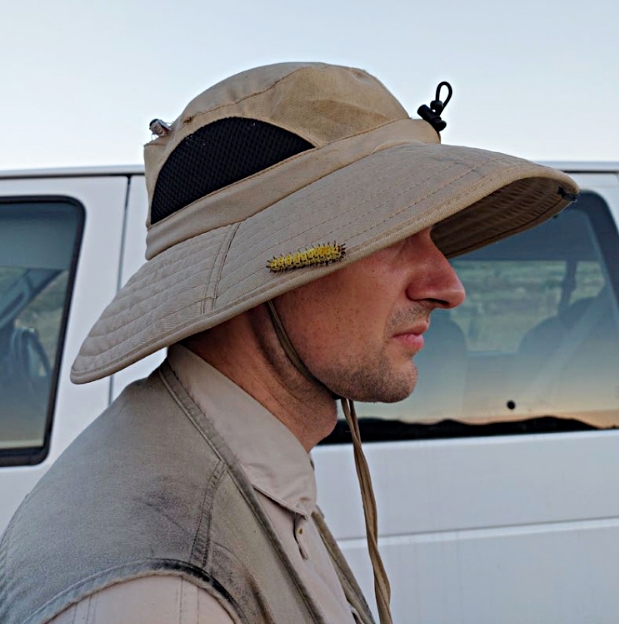
Griebenow was a member of the UC Davis Linnaean Games team (now renamed Entomology Games) that won two national championships (2018 and 2022) at the Entomological Society of America (ESA) meetings. He also was a member of Ohio State's Linnaean Games team that won second place in the 2017 national championship.
His publication list includes:
Griebenow, Z. H., Isaia, M., and Moradmand, M. (2022). Discovery of a troglomorphic ant (Hymenoptera: Formicidae: Leptanillinae: Yavnella laventa sp. nov.) in southwestern Iran, with the first description of the worker caste of Yavnella Kugler. Invertebrate Systematics, 36, 1118-1138.
Griebenow, Z. H. (2021). Synonymisation of the male-based ant genus Phaulomyrma (Hymenoptera, Formicidae) with Leptanilla based upon Bayesian total-evidence phylogenetic inference. Invertebrate Systematics, 35(6), 603-636.·
Griebenow, Z. H. (2020). Morphological and phylogenomic delimitation of tribes in the subfamily Leptanillinae (Hymenoptera: Formicidae), with a description of the male of Protanilla lini Terayama, 2009. Myrmecological News, 30, 229-250.
Department seminar coordinator is urban landscape entomologist Emily Meineke, assistant professor. For technical issues (Zoom), she may be reached at ekmeineke@ucdavis.edu. (See complete list of spring seminars.)

- Author: Kathy Keatley Garvey
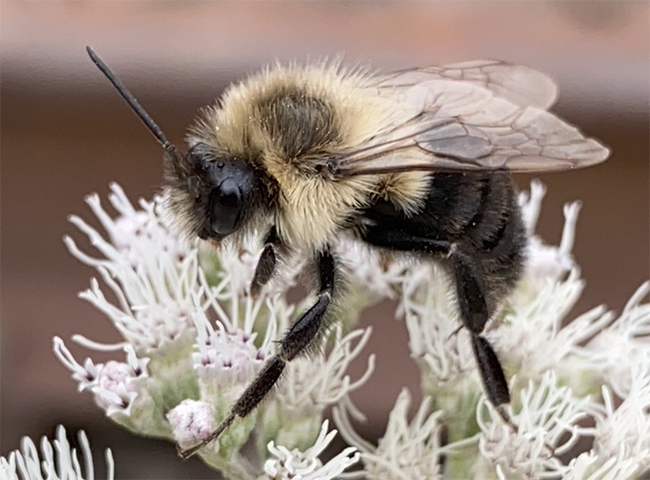
With the Entomological Society of America (ESA), however, being framed is a good thing. No, a great thing!
ESA honors its President's Prize winners (aka first-place winners) in the student research competitions by asking them to step behind a cardboard cut-out and smile for the camera. Voila! Suitable for framing!
Joe Rominiecki, ESA manager of communications, just announced that the images are now available and we have permission to share them.
We earlier wrote that doctoral candidates Danielle Rutkowski and Zachary Griebenow of the UC Davis Department of Entomology and Nematology each won the President's Prize for their individual research presentations at the 2022 Joint Meeting of the Entomological Societies of America, Canada, and British Columbia, held Nov. 13-16 in Vancouver, British Columbia.
And now, we have the images.
Background: At the annual ESA meetings, students are offered the opportunity to present their research and win prizes. They can compete in 10-minute papers (oral), posters, or infographics. The President's Prize winners receive a one-year paid membership in ESA, a $75 cash prize, and a certificate. Second-winners score a one-year free membership in ESA and a certificate.
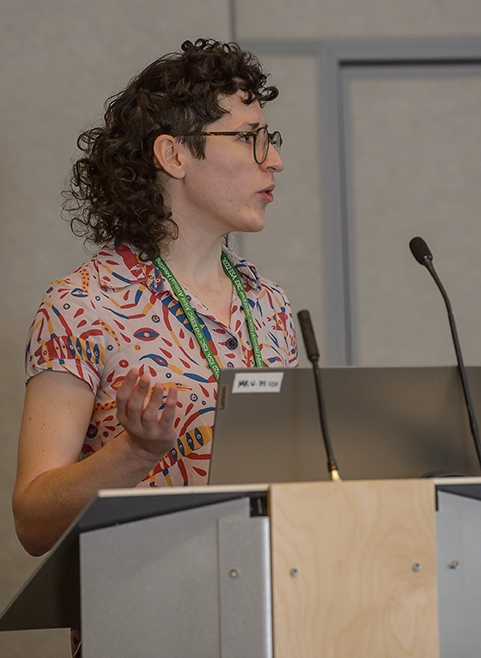
Rutkowski, who studies with community ecologists Rachel Vannette, associate professor, and distinguished professor Richard “Rick” Karban, spoke on “The Mechanism Behind Beneficial Effects of Bee-Associated Fungi on Bumble Bee Health,” at her presentation in the category, Graduate School Plant-Insect Ecosytems: Pollinators.
Her abstract: "Bees often interact with fungi, including at flowers and within bee nests. We have previously found that supplementing bumble bee colonies with these bee-associated fungi improves bee survival and increases reproductive output, but the mechanisms behind these effects are unclear. This research aimed to determine the mechanisms underlying positive impacts of fungal supplementation in the bumble bee, Bombus impatiens. We tested two hypotheses regarding possible nutritional benefits provided by bee-associated fungi. These included the role of fungi as a direct food source to bees, and the production of nutritionally important metabolites by fungi. To test these mechanisms, we created microcolonies bumble bees and exposed each microcolony to one of four treatment groups. These four treatments were created based on the presence of fungal cells and the presence of fungal metabolites. We found that bee survival and reproduction were unaffected by treatment, with trends of decreased survival and reproduction when fungi were present. This contradicts previous results we've found using this bumble bee species, where fungi had a positive impact. It is possible that this disparity in results is due to differences in pathogen pressure between the two experiments, as bees in the first experiment were exposed to large amounts of pathogen through provided pollen, including Ascosphaera and Aspergillus. This pollen was sterilized for subsequent experiments, reducing pathogen load. Therefore, it is possible that bee-associated fungi benefit bees through pathogen inhibition, and future work exploring this hypothesis is necessary to fully understand the role of these fungi in bumble bee health."
Zachary Griebenow. Griebenow, who studies with major professor and ant specialist Phil Ward, (Griebenow also captained the UC Davis Entomology Games Team in its national championship win at the Entomology Games or Bug Bowl) explained “Systematic Revision of the Obscure Ant Subfamily Leptanillinae (Hymenoptera: Formicidae), Reciprocally Informed by Phylogenomic Inference and Morphological Data.” His category: Graduate School Systematics, Evolution and Biodiversity: Evolution 1.
His abstract: "Ants belonging to the subfamily Leptanillinae (Hymenoptera: Formicidae) are sister to nearly all other extant ants. Miniscule and subterranean, little is known of their behavior. Contrary to the collecting bias observed in most ants, male leptanilline specimens are acquired more easily than workers or queens. The sexes are almost never collected in association, and many subclades within the Leptanillinae are known from male specimens only. Our comprehension of evolutionary relationships among the Leptanillinae is further obstructed by oft-bizarre derivation in male phenotypes that are too disparate for phylogeny to be intuited from morphology alone. These restrictions plague our understanding of the Leptanillinae with probable taxonomic redundancy. My thesis aims at leptanilline taxonomy that reflects phylogeny, inferred from both genotype and phenotype, and integrates morphological data from both sexes. Here I present the results of (1) phylogenomic inference from ultra-conserved elements (UCEs), compensating for potential systematic biases in these data, representing 63 terminals; and (2) Bayesian total-evidence inferences from a handful of loci, jointly with discrete male morphological characters coded in binary non-additive or multistate fashion. Notably, these analyses identify worker specimens belonging to the genera Noonilla and Yavnella, which were heretofore known only from males. Given such discoveries across the Leptanillinae, the number of valid leptanilline genera is reduced from seven to three in order to create a genus-level classification that upholds monophyly along with diagnostic utility."
We also salute our second-place winners (see previous news story:
- Lindsey Mack, who studies with medical entomologist-geneticist Geoffrey Attardo, assistant professor, covered “Three Dimensional Analysis of Vitellogenesis in Aedes aegypi Using Synchrotron X-Ray MicroCT” in the category, Graduate School Physiology, Biochemistry and Toxicology: Physiology
- Addie Abrams, who studies with Extension agricultural entomologist and assistant professor Ian Grettenberger, titled her research, “Hitting the Mark: Precision Pesticide Applications for the Control of Aphids in California Lettuce" in the category, Graduate School Physiology, Biochemistry and Toxicology: Integrated Pest Management
Congrats, all! They do our department and our university proud!
(The 7000-member ESA, founded in 1889, is the largest organization in the world serving the professional and scientific needs of entomologists and individuals in related disciplines. Its members, affiliated with educational institutions, health agencies, private industry, and government, are researchers, teachers, extension service personnel, administrators, marketing representatives, research technicians, consultants, students, pest management professionals, and hobbyists.)





